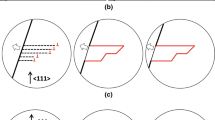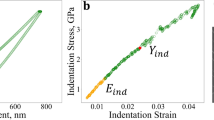Abstract
The principal evidence advanced in favor of synneusis (swimming together and attachment of crystals in igneous melts) is the observation in thin section of concentric zoning, with the centers of zoning in the individuals offset from the mutual boundary. However, randomly oriented sections through normal growth twins (twinned nucleus) and epitaxial overgrowths can show such offset in a large percentage of cases. A further possible cause of offset is the infilling of skeletal, dendritic or spherulitic growth forms. Irregularity and asymmetry, which have been cited as evidence of synneusis origin, are normal in epitaxial overgrowths, and may be displayed even in perfectly symmetrical growth twins, because of cuteffects and the fact that mismatch of faces at the composition plane of rotation twins often causes overlapping growth.
Experiments have shown that crystals in fluids can be aligned, apparently by hydrodynamic forces, so that gross shape elements are parallel and in contact; and that once in position, crystals can become attached. However, the twin laws observed in feldspar are not those which would be predicted on the basis of gross-shape alignment, but are highly selective in crystallographic relations. There is abundant evidence that supposed synneusis clusters occur early in crystallization, whereas crystal-crystal contacts should increase in frequency with the concentration of crystals. Forces which could cause crystal faces to be directly attracted to one another over distances of greater than a few atomic diameters are at present unknown.
Essentially all heretofore observed features of crystal clusters, especially those of early clusters, can be explained more simply as the result of growth processes than as the result of synneusis.
Similar content being viewed by others
References
Becke F (1911) Über die Ausbildung der Zwillingskristalle. Fortschr Mineral, Kristallogr Petrograph 1:68–85
Buerger MJ (1945) The genesis of twin crystals. Am Mineral 30:469–482
Carstens H (1968) Kinetic considerations in the genesis of growth twinning: a discussion. Am Mineral 53:342–344
Dowty E (1980a) Atomic structure of Carlsbad and Carlsbadalbite twins in feldspar. Z Kristallogr (in press)
Dowty E (1980b) Crystal-growth and nucleation theory and the numerical simulation of igneous crystallization. In: RB Hargraves (ed) Physics of Magmatic Processes. Princeton University Press (in press)
Drugman J (1938) On some unusual twin-laws observed in the orthoclase crystals from Goodsprings, Nevada. Mineral Mag 25:1–14
Faust JW, John MF (1964) The growth of semiconductor crystals from solution using the twin-plane reentrant-edge mechanism. J Phys Chem Solids 25:1407–1415
Gaubert P (1896) Sur la production artificielle de la macle des spinelles dans les cristaux d'azotate de plomb. Bull Soc Fr Mineral 19:431–434
Goldsmith JR, Laves F (1962) Monoclinic K-spar with triclinic morphology. Nor Geol Tidsskr 42:215–223
Goodspeed GE (1937) Development of plagioclase porphyroblasts. Am Mineral 22:1133–1138
Gorai M (1951) Petrological studies on plagioclase twins. Am Mineral 36:884–901
Hartman P (1973) Structure and morphology. In: P Hartman (ed) Crystal Growth: An Introduction. North-Holland, Amsterdam
Himmelbauer A (1925) Kristallographische Eigenschaften des Andesine von Trifail. Tschermaks Mineral Petrogr Mitt 38:610–623
Ingerson E (1952) Twinning frequency in feldspar phenocrysts from a quartz latite sill at Sierra Bianca, Texas. Am J Sci 261-A (Bowen Volume):189–202
Kirkpatrick JF (1977) Nucleation and growth of plagioclase, Makaopuhi and Alae lava lakes, Kilauea volcano, Hawaii. Bull Geol Soc Am 88:78–84
Köhler A (1948) Erscheinungen an Feldspaten in Ihrer Bedeutung für die Klärung der Gesteinsgenesis. Tschermaks Mineral Petrogr Mitt (Ser 3) 1:51–67
Lofgren G (1974) An experimental study of plagioclase morphology: Isothermal crystallization. Am J Sci 273:243–273
Mountain ED (1925) Potash-oligoclase from Mt. Erebus, Antarctica, and anorthoclase from Mt. Kenya, East Africa. Mineral Mag 20:331–345
Muir ID (1962) The paragenesis and optical properties of some ternary feldspars. Nor Geol Tidsskr 42:477–492
Neugebauer F (1906) Die Kristalltracht von einfachen Krystallen und Karlsbaden Zwillingen des Orthoklases. Tschermaks Mineral Petrogr Mitt 25:413–448
Papapitrou A (1935) Untersuchung über dendritisches Wachstum von Kristallen. Z Kristallogr 92:89–130
Raase P, Kern M (1969) Über die Synthese von Albiten bei Temperaturen von 250 bis 700° C. Contrib Mineral Petrol 21:225–237
Ross JV (1957) Combination twinning in plagioclase feldspars. Am J Sci 255:650–655
Schaskolsky M, Schubnikow A (1933) Über die künstliche Herstellung gesetzmässiger Kristallverwachsungen des Kalialauns. Z Kristallogr Mineral 85:1–16
Smith JV (1974) Feldspar Minerals Vol 2 Chemical and Textural Properties. Springer, New York
Spencer LJ (1942) Barium feldspars (celsian and paracelsicn) from Wales. Mineral Mag 26:231–245
Stull RJ (1979) Mantled feldspars and synneusis. Am Mineral 64:514–518
Swanson DA (1967) Yakima basalt of the Tieton River area, southcentral Washington. Bull Geol Soc Am 78:1077–1110
Tobi AC (1965) On the cause of internal optical scatter in plagioclase, and the occurrence of lamellar Albite-Ala-A twinning. Am J Sci 263:712–718
Vance JA (1969) On synneusis. Contrib Mineral Petrol 24:7–29
Vance JA, Gilreath JP (1967) The effect of synneusis on phenocryst distribution patterns in some porphyritic igneous rocks. Am Mineral 52:529–536
Viola C (1902) Beitrag zur Zwillingsbildung. Z Kristallogr Mineral 36:234–244
Vogt JHL (1921) The physical chemistry of the crystallization and magmatic differentiation of the igneous rocks. J Geol 28:318–350
Wenk E (1979) On fourlings of plagioclase twinned according to the laws albite, Ala, and albite-Ala. Am Mineral 64:917–921
Author information
Authors and Affiliations
Rights and permissions
About this article
Cite this article
Dowty, E. Synneusis Reconsidered. Contr. Mineral. and Petrol. 74, 75–84 (1980). https://doi.org/10.1007/BF00375491
Received:
Accepted:
Issue Date:
DOI: https://doi.org/10.1007/BF00375491




